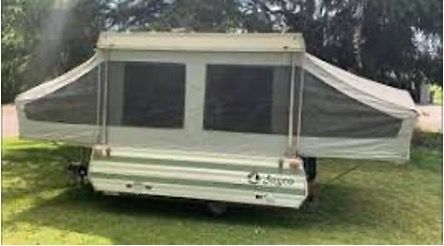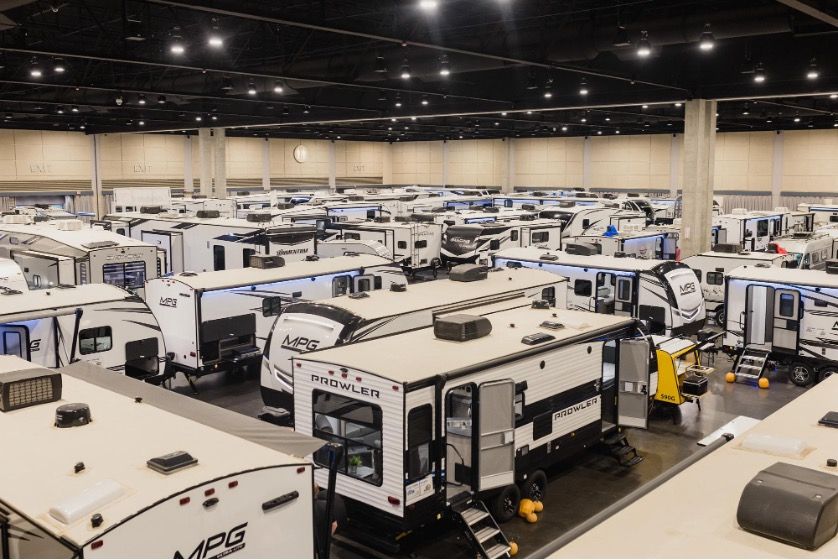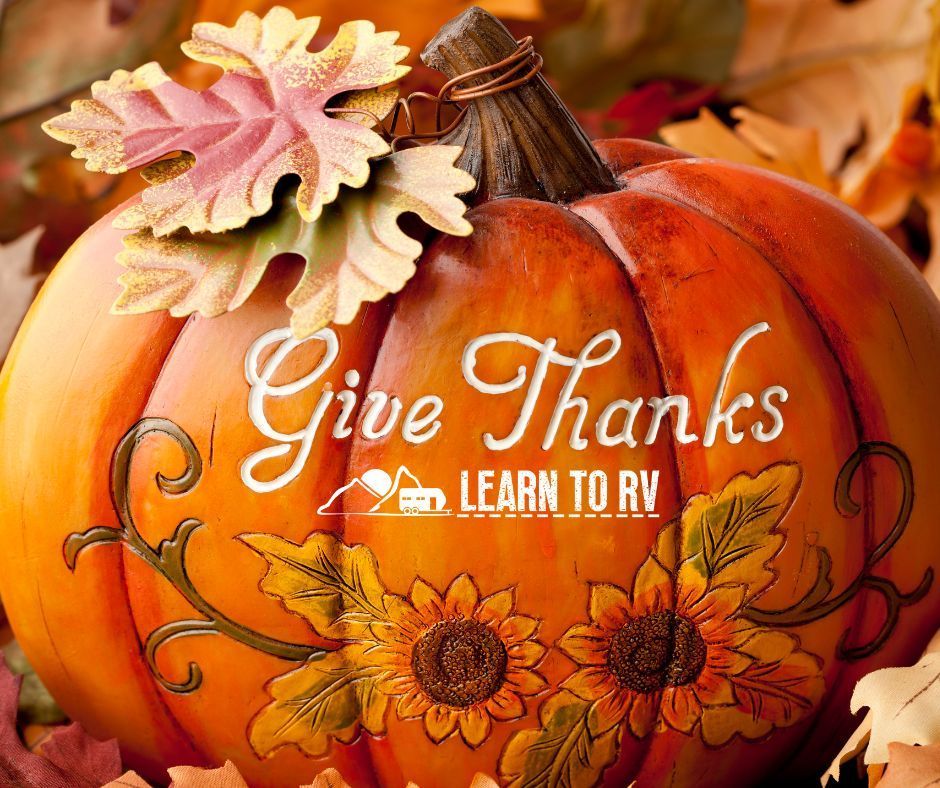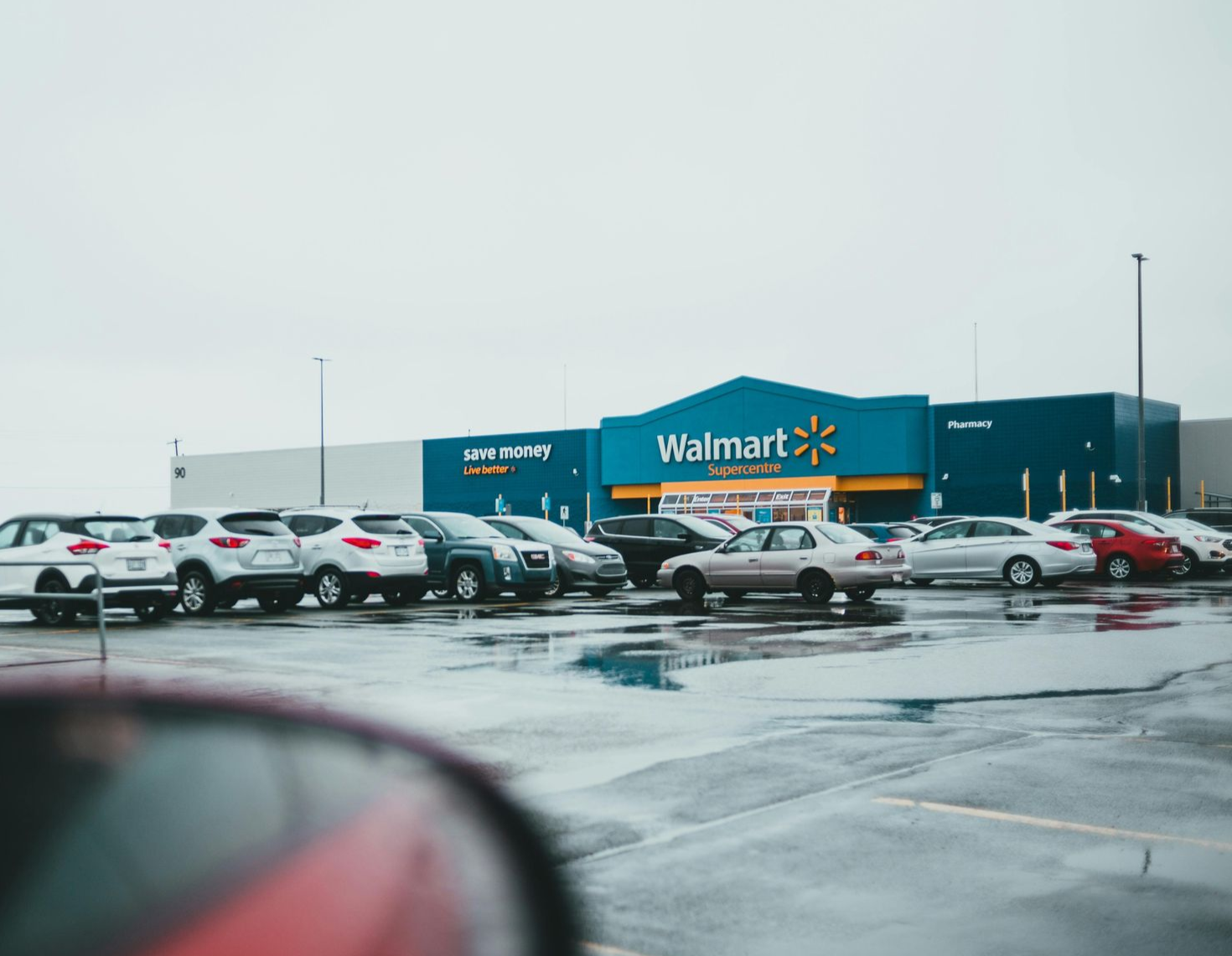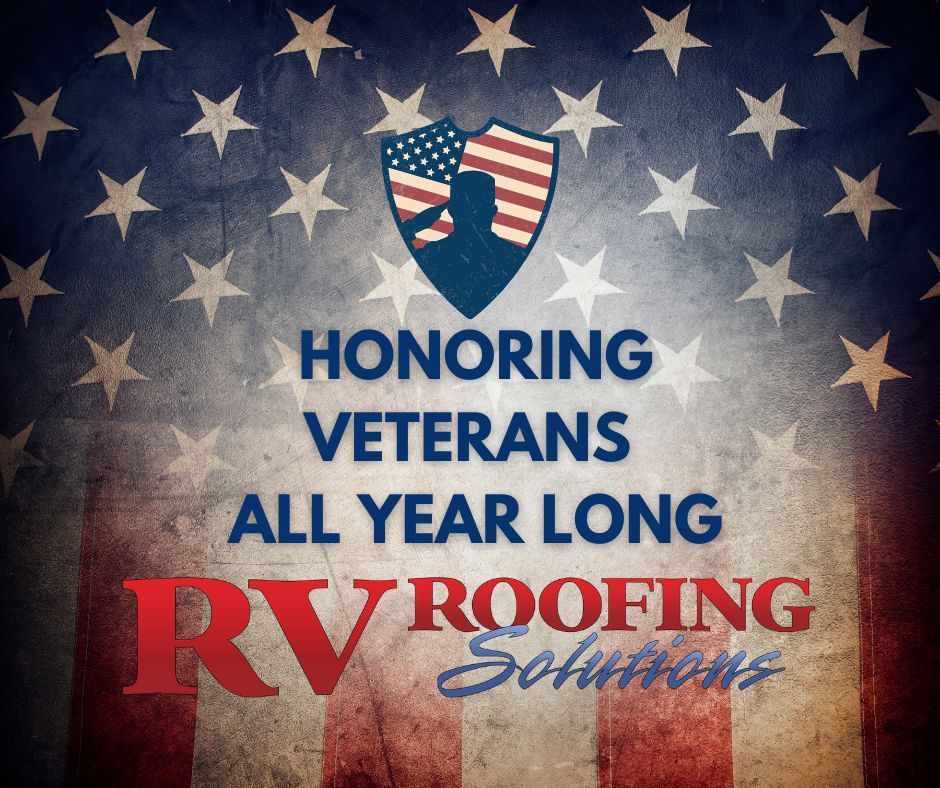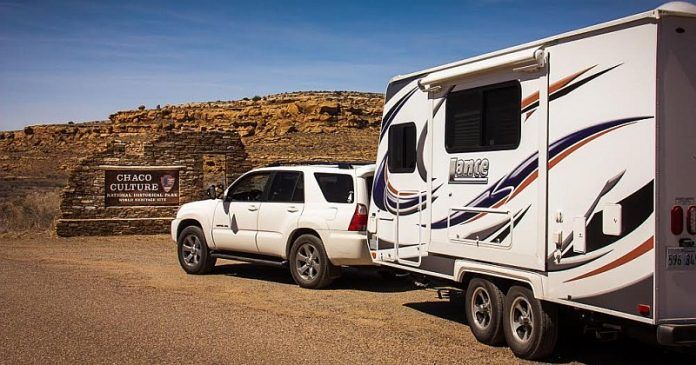The Road to Better RVing: Mistakes We Made & Lessons We Have Learned
Jennifer Schillaci • November 19, 2025
No Clickbait. Just Real Talk & Stories from the Road

After 12+ years on the road, we’ve made our fair share of mistakes. Some were small—like forgetting to latch a cabinet and watching our spice rack become a confetti cannon. Others? Not so small. (Ask us about the time we lost our brakes going down a mountain. Actually… maybe wait until we’ve had coffee.)
But every misstep has taught us something. And that’s what Learn To RV is all about.
This isn’t a list designed to scare you or rack up views. It’s a reflection from a family who’s lived the lifestyle, learned the lessons, and wants to help you skip the stress. Because RVing isn’t about perfection—it’s about progress. And if we can help you avoid even one headache, then sharing these stories is worth it.
On a recent episode of Learn To RV The Podcast, Tasha, Jenn, and Jennifer get real about the unpredictable—and very unglamorous—sides of life on the road. Mishaps happen. Sometimes it’s a tire. Sometimes it’s a roof. Sometimes it’s a whole series of wild events that leave you wondering if Mercury is in retrograde again.
It hit me recently—we’ve never actually made a list of the pitfalls to avoid. And after 12+ years on the road, we’ve got plenty to share. It’s a reflection from a family who’s lived the lifestyle, learned the hard lessons, and wants to help you skip the stress. Because RVing isn’t about getting it all right—it’s about growing through the mess.
Skipping the Walkaround Before Departure
The Mistake: Forgetting to check slides, hookups, or storage bays before driving
It’s one of the simplest habits—and one of the easiest to skip when you’re in a rush: the walk-around.
Slides, hookups, storage bays, antennas, jacks… there’s a lot to double-check before you hit the road. And forgetting even one thing can lead to damage, lost gear, or a very awkward stop on the highway.
We always do a walk-around. But let’s be honest—there have been more than a few times when we were in a hurry and skipped a step. We often travel with a chase vehicle, which helps us catch things like open bay doors before we lose something… but not always. We’ve definitely left items behind at campsites, and we still have no idea where our outdoor rug went a month ago. (If you find it somewhere between Hershey and Virginia Beach, let us know.)
Create a departure checklist and stick to it.
Even if you’ve done this a hundred times, even if you’re just moving sites, even if it’s raining—walk around your rig. Every time. Your gear, your safety, and your sanity will thank you.
Read more about a departure checklist and download our starter checklists here.
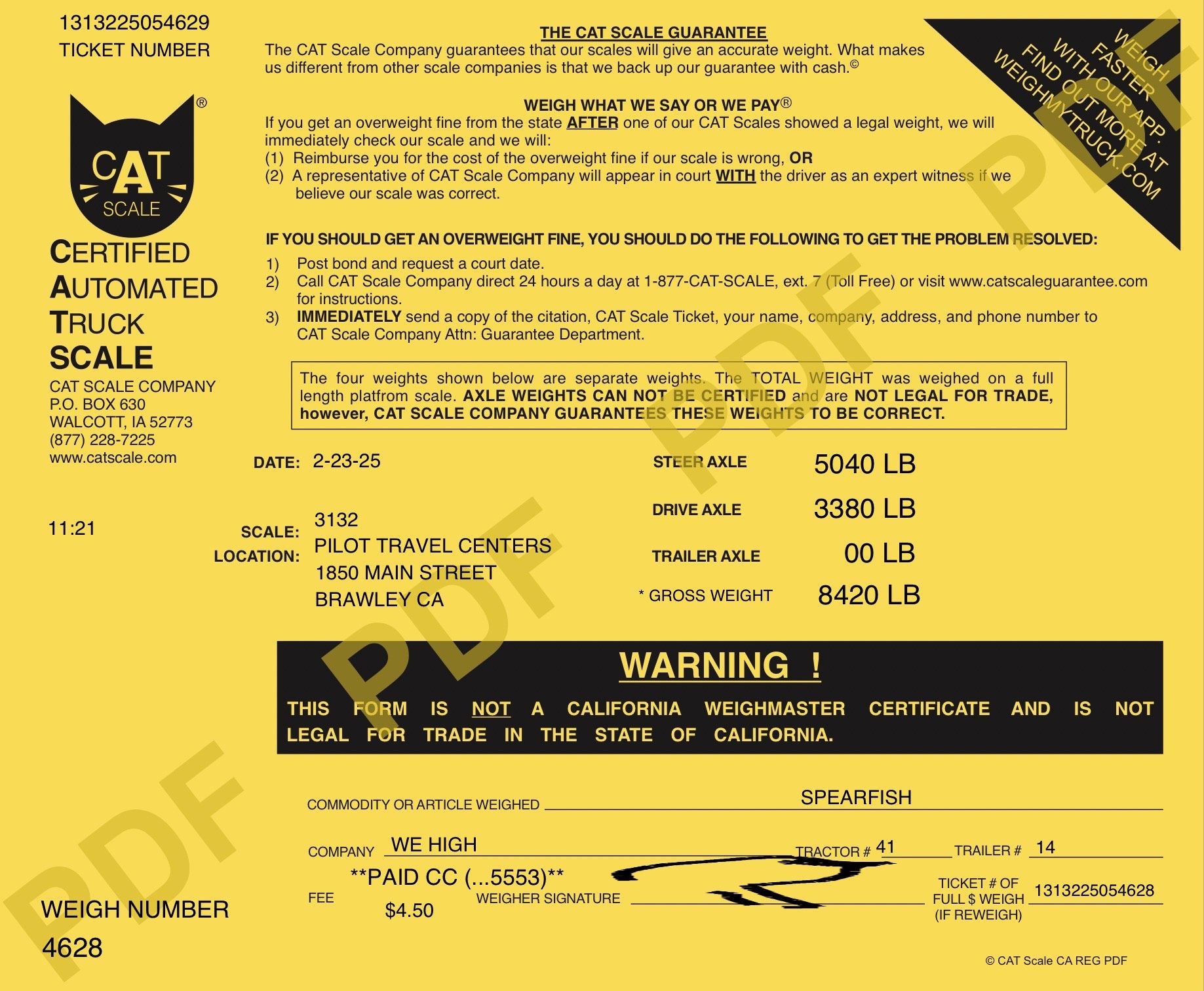
Overloading the RV
The Mistake: Packing like you’re moving into a house.
We talk about this all the time—but the real question is… do we actually practice it?
Overloading your RV is one of the most common and costly mistakes out there. It’s easy to grab “just one more thing”—a sweater, a spare part, a favorite mug—and before you know it, your rig is pushing its limits. Do you have an “item in, item out” policy? Yeah… us too..... unless it's my favorite sweater! What’s one more?
And let’s be honest—rv roof people (you know who you are) are notorious for carrying all the tools. Especially full-time RVers, like us. We’ve got bins of spare parts “just in case.” And while yes, you may never know when you’ll need that extra water pump or fuse kit… the truth is, everything weighs something.
Know your rig’s weight limits—GVWR (Gross Vehicle Weight Rating), CCC (Cargo Carrying Capacity), GCWR (Gross Combined Weight Rating). Weigh your RV at a CAT scale.
Understand your tow capacity and payload. Because many people are towing with trucks that are too small or campers that are way overweight—and they have no idea.
While we seem to talk about this all the time we have written more than one in-depth article for the blog on this important topic.
Less is more—especially when it comes to safety. Prioritize essentials. Reevaluate often. And remember: the lighter your load, the smoother your ride.
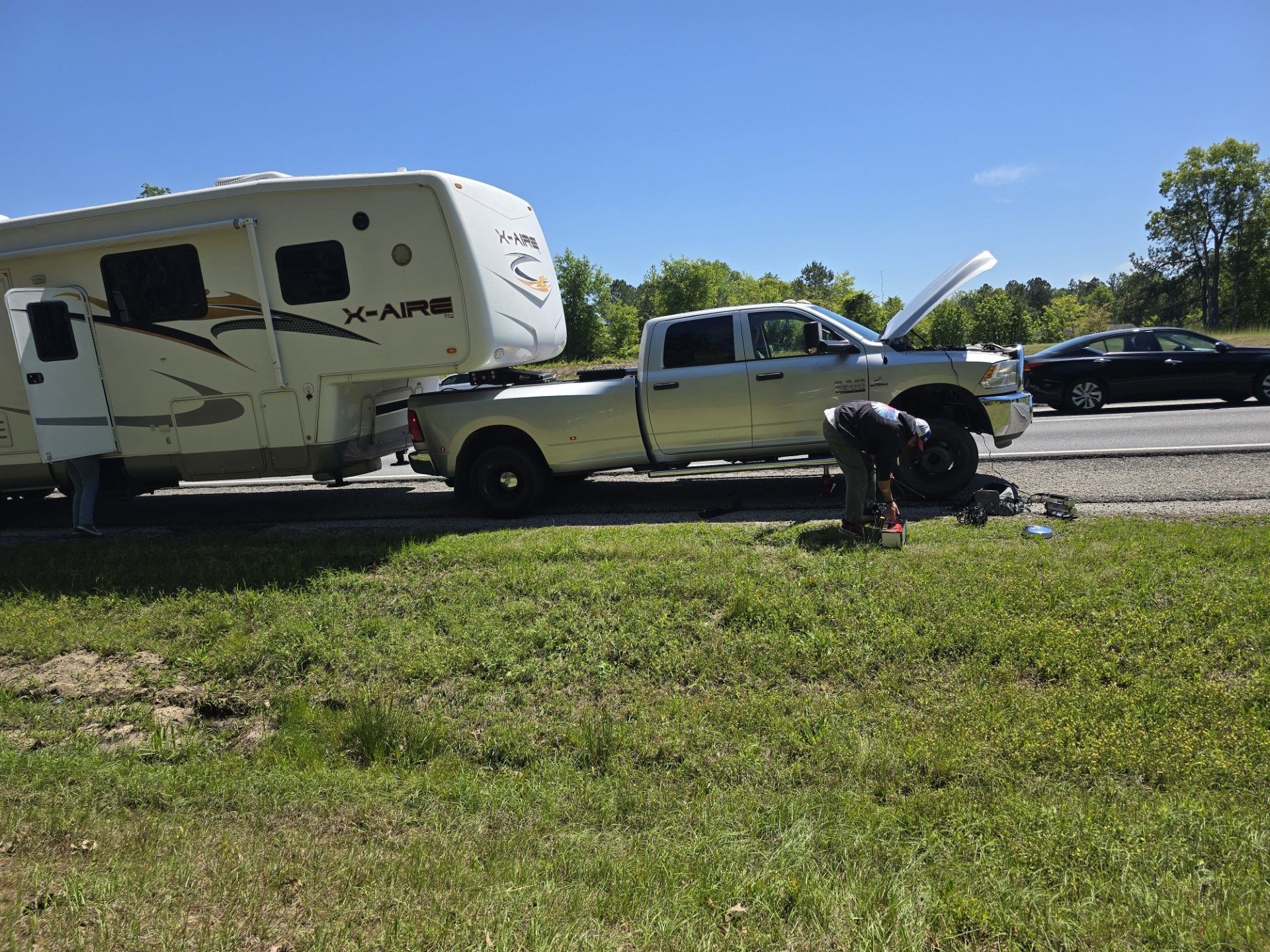
Ignoring Tire Maintenance
The Mistake: Assuming tires are fine because they “look okay.”
Tire maintenance is one of those things that’s easy to overlook—until it’s not. Just because your tires look okay doesn’t mean they’re safe. Cracks, dry rot, low pressure, and age-related wear can all lead to blowouts, and trust me, you don’t want to experience a “China bomb” on the highway.
TPMS Saved Our Bacon—Again
We’ve had our TST tire pressure monitoring system (TPMS) for a while now, and let me tell you—it’s earned its keep more than once this year.
This spring, on our way to Asheville, Frank and I both heard a faint hissing sound. You know that moment when you lock eyes and ask, “Do you hear that?”—well, right then, the TPMS alarm went off. The passenger front tire was losing air fast.
Thanks to that early alert, we were able to pull over immediately. Time was critical. That tire was deflating rapidly, and with a big fifth wheel behind us, we knew jacking it up was going to be a whole lot more complicated if it went fully flat.
But here’s the thing: because we caught it so early, Frank was able to get the truck jacked up before the tire gave out completely. Crisis averted.
Some days, I joke that I travel with a United States Marine—not just because Frank’s calm under pressure, but because his response time is lightning-fast. Whether it’s a tire, a tech issue, he’s already on it before I finish saying, “Uh-oh.”
We’ve seen it happen. And we’ve learned the hard way that tire care isn’t optional—it’s essential.
Here’s what we do
- Check tire pressure before every trip.
Not once a month. Not “when it feels right.” Every time.
- Inspect for cracks, bulges, and wear.
Especially if your rig sits for long periods.
- Know your tire ratings.
What’s the max load? What’s the top speed? Are you towing within spec?
- Replace tires regularly.
Even if the tread looks good, age matters. Most RV tires should be replaced every 3–5 years. Fulltime RV'ers even more often
- Invest in a TPMS (Tire Pressure Monitoring System). We use a TST system & it’s worth every penny for our peace of mind.
- Include tires in your walkaround.
It’s not just about bay doors and jacks—your tires are your foundation.
- Schedule annual bearing repacks. It’s part of overall chassis health, and skipping it can lead to costly damage.
- Understand your GCWR, payload, and tow ratings. Many RVers are unknowingly overloaded or towing with underpowered trucks—and that puts stress on tires, brakes, and suspension.
RVing is about freedom, but safety is what makes that freedom sustainable.
Don’t let tire neglect be the thing that derails your adventure.

Check your Brakes
The Mistake: Forgetting How Weight Impacts Safety—Especially in the Mountains
Our first year on the road, we found ourselves in Yosemite—one of the most breathtaking places we’ve ever camped. We were planning to boondock on the eastern side of the park, so we filled everything: 25 gallons of fuel, 110 gallons of freshwater, fully loaded for another week of off-grid living.
Then came the twist: the ranger told us we were first in line for a site if someone didn’t show up. Every RV showed up that day.
So we had to leave.
We didn’t even think about the fact that our tanks were full. We had a 1-ton E350 van with a V10 Triton engine, six tired kids, and waning daylight. We exited via Tioga Pass—10,000 feet of elevation and steep grades that demand respect.
Let’s just say… this is not my favorite campfire story.
We are still here to tell the tale, but we took BIG risks that day—risks we should have never taken. I still look back and believe angels were stopping our vehicle. Because the truth is, weight matters. And in the mountains, it matters even more.
Why This Matters:Why This Matters:
- Water weighs 8.34 lbs per gallon. That’s over 900 lbs of freshwater alone.
- Fuel adds weight too. Plus gear, passengers, food, and supplies.
- Brakes, transmissions, and suspension systems are under extreme stress on steep grades.
- Overloading can lead to brake failure, overheating, and loss of control.
It’s easy to get caught up in the excitement of hitting the road—especially when you’re packed, fueled, and ready to roll. But skipping a brake check or failing to test your hitch, tow bar, tow vehicle, or electrical connections? That’s a mistake that can cost you more than just time.
Brakes and connections aren’t just technical details—they’re your safety net.
We’ve seen it happen: a trailer that wasn’t fully latched, a brake controller that wasn’t calibrated, a tow vehicle that didn’t respond the way it should. And when you’re hauling thousands of pounds down a mountain pass, there’s no room for “oops.”
- Brake controllers need calibration.
Especially if you’ve switched tow vehicles or adjusted your load.
- Hitch pins, safety chains, and sway bars can shift.
A quick tug test and visual inspection can prevent disaster.
- Electrical connections power your lights and brake signals.
If they’re loose or corroded, you’re invisible—and unsafe..
- Breakaway cables save lives. But only if they’re properly attached and functional.
- RV brakes wear down over time. Especially on older rigs or after long trips.
Test them before every departure.
Make it part of your walk-around. Don’t just glance—test, tug, and verify. Your rig, your passengers, and everyone else on the road are counting on it.
Don’t let urgency override safety. If you’re tired, overloaded, or unsure—pause and reassess. RV life is full of surprises. Some are magical. Some are humbling.
This one was both.
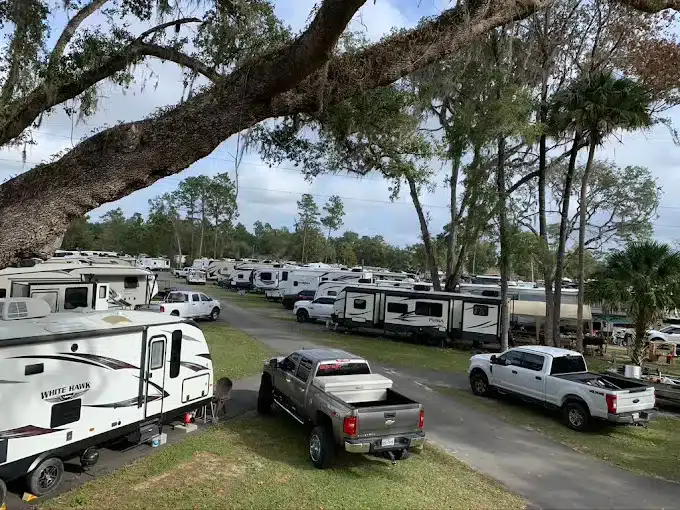
Not Booking Ahead (Especially in Peak Season)
The Mistake: Assuming you’ll “just find a spot.”
We love the freedom of RV life—the open road, spontaneous detours, and the joy of waking up somewhere new. But here’s the truth: not booking ahead, especially during peak season, can turn adventure into stress.
Since COVID, popular destinations have become harder to access. Some places—like the Albuquerque Balloon Fiesta or the Fulltime Families rally in Madison, FL—can book out a year in advance. National parks like Zion, Yellowstone, and Yosemite? You’ll need reservations months ahead. And don’t even try leaf-peeping in the Smoky Mountains without a plan.
We’ve done the Hail Mary pass travel. It’s not fun. It’s hard on your vehicle, your nerves, and your family. Driving too far, too fast, hoping for a last-minute site—it’s the opposite
of what RV life is supposed to feel like.
That’s why we follow the 3-3-3 rule:
- Drive no more than 300 miles in a day
- Arrive by 3 PM
- Stay at least 3 nights (usually it's a minimum of 7 for us)
It keeps travel manageable, gives us time to settle in, and helps us actually enjoy the places we visit.
- Use apps like Campendium, RV Life Trip Wizard, or The Dyrt to plan ahead.
- Book early for holidays, rallies, and bucket-list destinations.
- Keep a flexible backup plan—but don’t rely on luck alone.
- Know your travel rhythm and honor it.
- And if planning feels overwhelming, try the concierge service from RV Trip Makers. They’ll help you map out your route, book sites, and take the stress out of travel logistics—so you can focus on the fun.
RV life is about freedom—but smart planning makes that freedom sustainable.
Plan ahead—especially for national parks, holiday weekends, and popular destinations. Apps like Campendium or RV Life Trip Wizard can help.
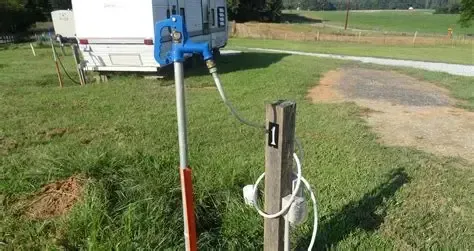
Forgetting to Check Campground Amenities
The Mistake: not all campgrounds or sites are created equal.
Early in our RV journey, I made the rookie mistake of assuming full hookups were standard. I booked a site that didn’t have water or sewer—and didn’t realize it until we arrived with barely any fresh water in the tank. Let’s just say… it was a pretty uncomfortable couple of days.
Now, I usually double-check the amenities before confirming a stay. I look for power options, water and sewer access, Wi-Fi, and whether there’s a dump station nearby. If the listing isn’t clear, I call. It only takes a minute, and it saves a ton of hassle. Knowing what’s available helps me prep ahead, fill tanks if needed, and pack only what we’ll actually use.
Recently, in the chaos of prepping for the Hershey RV Show, I rushed through booking our stay and accidentally reserved a W/E site—water and electric only, in case you’re new to the lingo. With five of us living in the RV and a full week of be a vendor for the 1st time at the Hershey RV Show, that little oversight added a whole lot of stress to an already packed schedule.
No sewer hookup meant daily trips to the bathhouse for showers (not exactly relaxing), and I couldn’t run the washer—so laundry piled up fast. To top it off, we had to call in the honey wagon every three days to empty the tanks, which was one more thing to coordinate during an already hectic event.
Lesson learned: when booking during busy weeks, double-check the site details. Full hookups aren’t just a luxury—sometimes they’re a lifeline when your RV is your home base and your work zone.

What's that Smell???
The Mistake: Forgetting to Latch the Fridge or Cupboards (or re-latch them)
A few years ago, we were headed to Salida, Colorado for a 10-day Xscapers boondocking convergence… and the unthinkable happened.
We USED to brew our own kombucha. We had a thriving sourdough starter. Our fridge was a little ecosystem of living, bubbling goodness. And yes—we had a lock on the fridge. And no—it didn’t fail. In fact, the kid in charge had made sure it was latched.
But then Frank needed a snack before we hit the road.
Between mountain passes and what felt like a rolling earthquake, the fridge door must have swung open mid-drive. When we finally opened the camper, it was a scene. Kombucha everywhere. Sourdough starter smeared across the walls. A giant, smelly mess of fermented chaos.
Lesson learned: always double-check your fridge and cupboard latches before departure—and re-check if anyone opens them after the walkaround.
Even the best systems can’t save you from a hungry driver and a bumpy road.
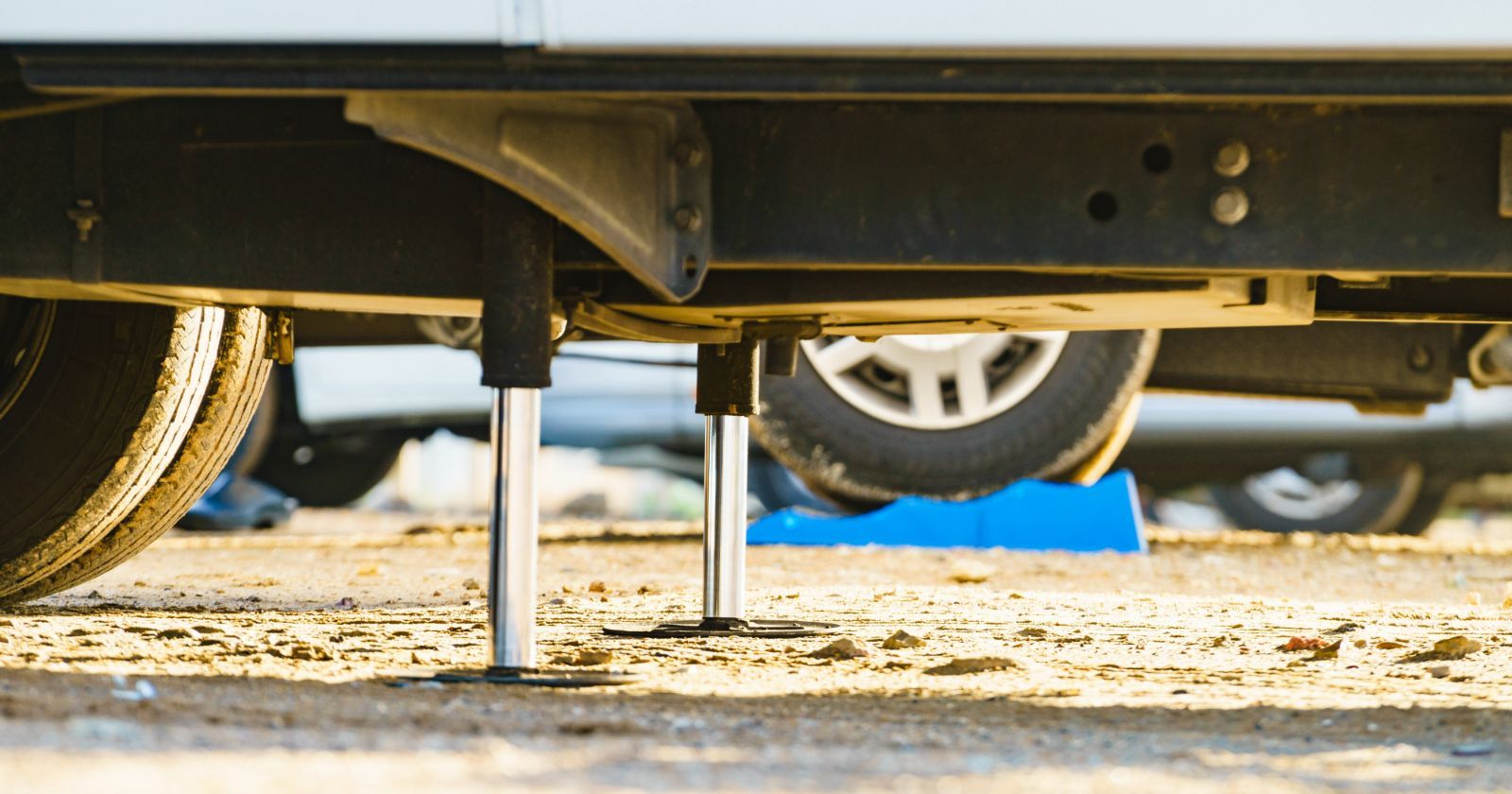
Forgetting to Level the RV
The Mistake: Sleeping on a slant or stressing your fridge.
“Who cares if the RV is tilted?” Actually… you should.
It might seem harmless—just a little slant, right? But over time, an unlevel RV can cause real problems. Sleeping on a slope isn’t just uncomfortable—it can mess with your posture, strain your back, and make you feel off-balance. But the bigger issue? Your appliances.
RV refrigerators are designed to operate best when level. Tilted operation can stress the cooling system, reduce efficiency, and in some cases, even cause permanent damage. And that’s not all—slides can bind, doors may swing open unexpectedly, and tanks might not drain properly.
We’ve learned this the hard way. A small bubble level and a set of leveling blocks (or an auto-leveling system if you’ve got one) can save you from a lot of headaches. It’s part of our walkaround every time—and yes, even then, we’ve had moments where we thought we were level… until the fridge started acting up or someone rolled out of bed.
The Fix:
- Use leveling blocks or an auto-leveling system.
- Keep a bubble level handy for quick checks.
- Make leveling part of your arrival routine—before slides go out or tanks get filled.
Leveling isn’t just about comfort—it’s about protecting your rig, your gear, and your body. So yes, it matters.

Neglecting Tank Etiquette
The Mistake: Dumping tanks improperly or letting sensors get gunked up.
Let’s be honest—RV tank maintenance isn’t glamorous, but it’s absolutely essential. One of the biggest mistakes new RVers make is dumping tanks improperly or assuming their sensors are telling the truth. Spoiler alert: they’re probably not.
In fact, I don’t think we’ve ever had an RV where the tank sensors worked consistently. And we’ve tried it all—ice and Dawn (which, by the way, can slowly destroy your seals if overused), enzyme treatments, fancy cleaners, and every “miracle” product on the shelf.
But here’s what we’ve learned: nothing beats the basics.
- Use plenty of water. Like, more than you think. My friend Wendy from Kleen Tank says it best: “Water, water, water.” It’s the key to keeping things flowing and sensors cleaner.
- Dump black before gray. Always. It helps rinse out your hose and keeps things a little less… unpleasant.
- Clean tanks regularly. Don’t wait until there’s a smell or a clog. Preventative care is everything.
- Choose treatments wisely. Some products mask odors but silently eat away at your seals. Look for sensor-safe, eco-friendly options—and if you’re not sure, Kleen Tank offers a free DIY recipe that actually works.
- Know your system. Learn how your valves, vents, and flush systems work. A little knowledge goes a long way in avoiding big messes.
There are tons of products out there, and it’s easy to get overwhelmed. But the truth is, no product replaces good habits. Tank care isn’t just about comfort—it’s about protecting your rig and your sanity.
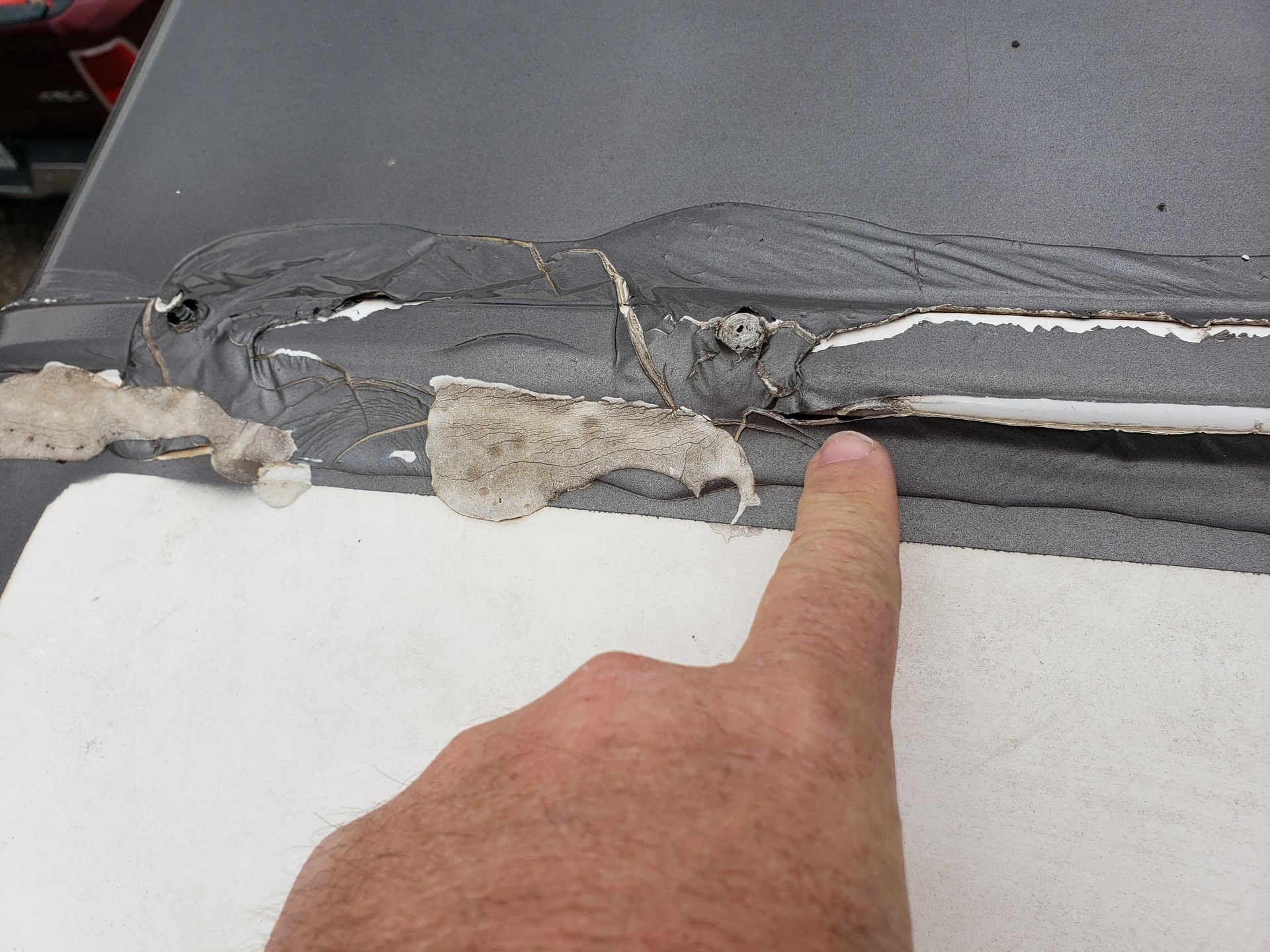
Neglecting your RV Roof
The Mistake: RV Roofs Don't Need Regular Maintenance
Out of sight, out of mind—until it leaks.
One of the most expensive mistakes RVers make is assuming the roof is fine because it “looks okay” from the ground. But your RV roof is constantly exposed to sun, rain, wind, and debris. Over time, seals crack, caulking wears down, and tiny gaps become big problems.
Roof maintenance isn’t optional—it’s essential.
I struggle every time I write a blog post about roofs—because by now, most of you know Frank and I own RV Roofing Solutions. It’s hard not to feel like we’re selling something. But the truth is, we care deeply about our community and the lack of education around roof care. So even if you’re not ready to invest in a seamless system that eliminates the need for annual maintenance, we’d be remiss not to talk about how to protect what you’ve got.
- Inspect your roof regularly. At least once a quarter & always before and after a big trip.
- Check seals and caulking. Look for cracks, gaps, or peeling. Reapply as needed.
- Clean off debris. Leaves, branches, and buildup can trap moisture and accelerate wear.
- Know your roof type. EPDM, TPO, fiberglass—they all have different care needs.
- Schedule annual professional inspections. Especially if you’re full-time or travel often.
If you are ever at a rally we are attending RV Roofing Solutions does offer on-site roof inspections. Your roof is your first line of defense. Treat it like the critical system it is—and your RV will thank you.
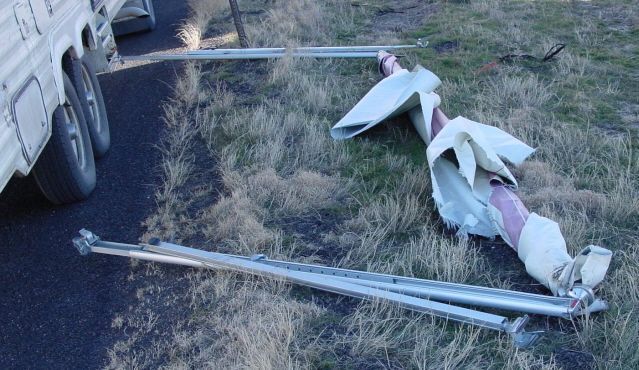
It doesn’t take much wind to wreck an RV awning.
The Mistake: Leaving the Awning Out Unattended
Leaving it extended while you’re away from camp is one of the most expensive mistakes new RVers make—and we have learned that the hard way....more than once. In our first year on the road, a sudden Florida storm ripped our awning clean off one side broken in the center. Hundreds of dollars in damage, and a whole lot of regret.
Ever since, We have been consistent about retracting the awning—even for a short hike or a grocery run. It takes less than a minute, and it’s a small habit that can save you from a major repair. When we’re parked for multiple days, I add tie-downs and motion sensors for extra peace of mind.
Another year, another awning debacle.
This summer, we had a shiny new motorized awning installed from Shade Pro on our RV while at a Rally in Rock Springs, Wyoming—aka the unofficial wind tunnel of the West. (Seriously, if Wyoming had a state bird, it’d be a flying lawn chair.)
Fast forward to Gillette, where Frank just wanted a little shade after we parked. We left the awning out just a smidge… and wouldn’t you know it, a gust of wind came barreling through like it had a personal vendetta. The RV rocked, the awning flailed, and we held our breath.
Thankfully, we were at an event in Gillette, and—miracle of miracles—the guy who installed the awning was there too. He helped us get it fixed, but let’s just say… it wasn’t cheap. Lesson reinforced: retract the awning. Always. Even if it’s just a little. Even if the sky looks calm. Especially in Wyoming

Water Water Everywhere!
The Mistake: Not turning the water off when leaving your RV
This is commonly overlooked, especially if you have never had an issue. Let me save you the hassle and cost of repairs... turn your water off anytime you leave your RV! One of our other writers, Jennifer Aggio, told me about how they flooded their RV in the first week of ownership because the black tank flush got left on and they headed down the road to visit family. The result was over $9,000 of damage. For them thankfully they had the right insurance and they picked up the tab but you won't always be that lucky.
After that they became habitual at turning off their water, 6 years later they decided to relax just a little. They were doing a camphosting position and needed to make a lap around the campground, unfortunately the laundry was running. So they decided they've never had an issue with their washer, it was safe, it was calculated, it was good to leave the water on while they made a lap. Nothing could go wrong!
Wrong! That ONE TIME the washing machine decided to act up and overflowed the grey tank in that one little lap around the campground. Another mess, at least not as big as the first time.
The solution, make it a habit to always turn your water off, because you just never know when a faucet gets left on, a toilet decides to keep 'running', or who knows what but theres lots of ways water can become a big issue, don't let that be you!

Healthcare on the Road
The Mistake: Not Planning for Appointments (and Prescriptions) on the Road
One of the most overlooked challenges of RV life? Appointments—and prescriptions.
It’s easy to assume you’ll just “figure it out,” but life doesn’t pause when you travel. Doctor visits, dental cleanings, eye exams, haircuts, massages, physicals—they all still need to happen. And not all appointments are created equal. Some can be rescheduled or skipped. Others, like VA check-ins or specialist visits, are non-negotiable.
While we do practice quite a bit of homeopathy on the road—and it’s been a wonderful way to support our health naturally—there are still times when conventional care is necessary. Frank goes to the VA, and while telehealth has come a long way since 2020, there are appointments he simply can’t miss.
And then there’s prescription management, which is a whole other layer. If you rely on regular medications, make sure your pharmacy can ship or transfer refills to wherever you are. National chains like CVS, Walgreens, and Walmart make this easier, but it still takes planning. We keep a running list of refill dates, dosage needs, and pharmacy contact info so nothing slips through the cracks.
Here’s how we manage it:
- Map out essential appointments quarterly—especially for things like VA visits or dental cleanings.
- Use telehealth when possible—it’s surprisingly effective for routine check-ins and follow-ups.
- Find national chains for routine care and prescriptions—consistency matters when you’re mobile.
- Keep a shared calendar with reminders and location notes so you’re not scrambling last-minute.
- Build in buffer days around events or travel days in case something urgent pops up.
RV life is flexible—but your health and wellbeing still need some structure. A little planning goes a long way in keeping you (and your crew) cared for while you chase the horizon. If you need a little help it's open enrollment season... let's get you connected with Dealora!
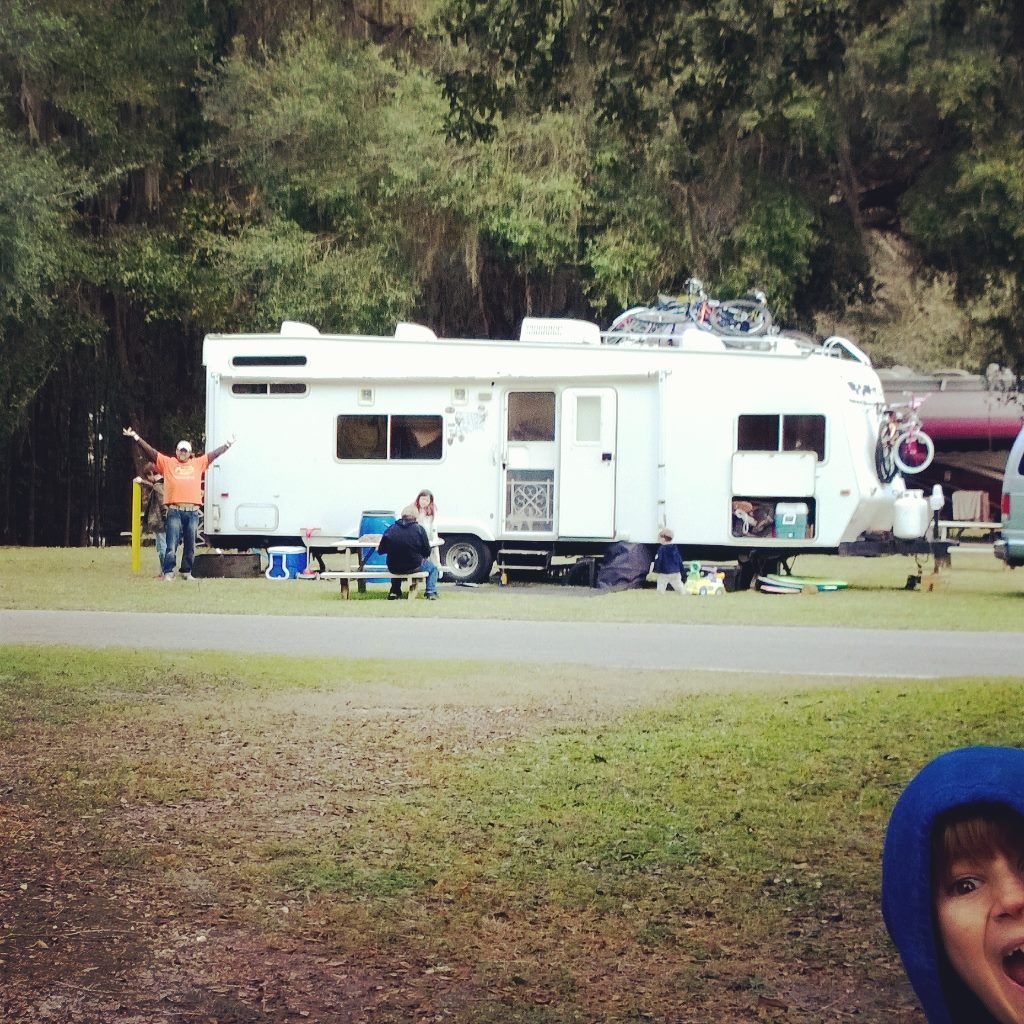
What I Wish I Knew Before My First Night in an RV
The Mistake: Not Knowing Your RV Systems
Confession time: the first night I ever spent in an RV… was also my first day on the road.
When I say I jumped into RV life headfirst, I mean it. The very first night I ever spent in an RV was also my first night living in one. No test run. No trial weekend. Just me, a packed rig, Frank, the kids & the cats and a whole lot of “we’ll figure it out.” And while we did—eventually—it came with a steep learning curve, a few tears, and more than one “what does that button do?” moment.
It’s tempting to dive into RV life and figure things out as you go—but trust me, not knowing how your systems work can lead to trouble fast. Plumbing, electrical, propane, and battery setups all have their quirks, and skipping the manuals is a mistake many new RVers make.
We learned that firsthand early on. We often spent hours watching tutorials, reading every page of the manuals, and chatting with seasoned RVers around campfires. That knowledge helped us fix water heater (who knew you actually had to change out the anode rod!?), troubleshoot power outages, and help us avoid rookie mistakes—like leaving the black tank valve open.
And let’s be honest—we started doing this in 2013, long before it was trendy or before influencers and YouTubers made it look easy. Back then, we were the ones with the learning curve. The ones figuring it out in real time, with real consequences.
If you’re curious about RV life, do yourself a favor and take a test run. Many rental companies offer extended trip options, and it’s a great way to see if the lifestyle fits before diving in headfirst. You’ll get a feel for the space, the systems, and the rhythm of life on the road—without the pressure of long-term commitment.
RVing can be magical, freeing, and deeply rewarding—but it’s also a big shift & a small space. A little trial run can go a long way in helping you start with confidence instead of chaos.
That’s why Learn to RV exists—to help you skip the stress and start with confidence.
We’re here to offer free, practical education for all RVers, whether you’re just starting out or deep into the journey. Because when you understand your rig, you’re not just traveling—you’re thriving.
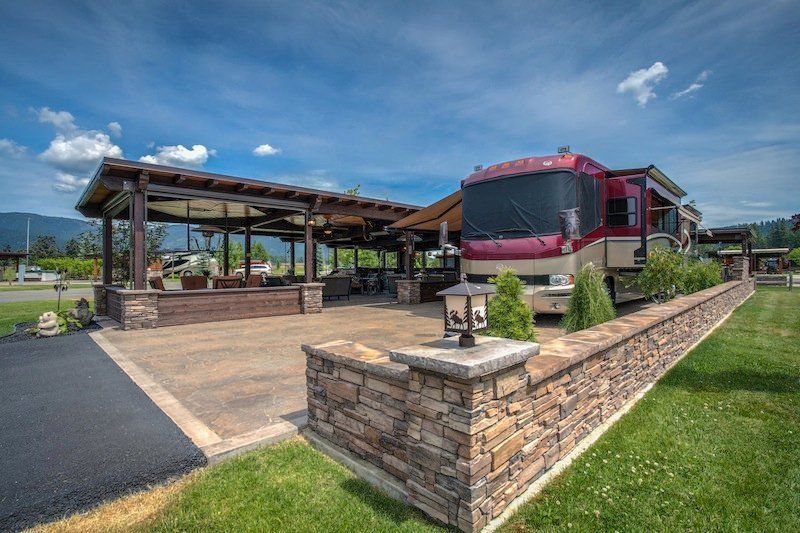
RVing Isn’t necessarily Cheap.
The Mistake: Failing to Budget for Ongoing Costs
One of the biggest financial mistakes many new RVers make is assuming the lifestyle is low-cost or even “free.” The truth? RVing comes with ongoing expenses that can sneak up fast. Campsite fees, fuel, maintenance, repairs, insurance, and upgrades all add up over time—and if you’re not prepared, it can take the joy right out of the journey.
Since the COVID surge, RVing has only gotten more expensive. With more people hitting the road, demand for campsites skyrocketed—and so did prices. What used to be a $35-a-night stay can now run $100–$150 at premium resorts or national parks like Yellowstone. And that’s before you factor in rising fuel costs, insurance hikes, and the occasional surprise repair.
Early on, we built a basic travel budget that included fuel estimates, nightly stays, groceries, and a repair/emergency fund. That monthly snapshot helps us travel long-term especially when something unexpected occurs. Yes, RVing can still be cost-effective—but only if you plan carefully.
And let’s be honest: RVing isn’t all that fun if you don’t have the funds to actually experience the places you’re visiting. We stretch our budget by using tools like Atlas Obscura to find quirky, free attractions, and we lean on museum and science center memberships to cut costs. We also have memberships with Thousand Trails, Coast to Coast, RV Overnights, & Passport America. While those do cost some money upfront, they can make stays more affordable.
But food and fuel prices vary wildly—especially in remote areas—and even groceries can be a shock if you’re not prepared.
So before you hit the road, take a moment to map out your financial reality. It’s not about limiting the adventure—it’s about making sure you can actually enjoy it.

But the campground has Wifi
The Mistake: Relying on Campground Wi-Fi for Internet
It’s a common rookie move: assuming the campground’s Wi-Fi will be good enough for streaming, Zoom calls, or remote work. Spoiler alert—it usually isn’t.
Campground internet is often shared across dozens (or hundreds) of rigs, throttled during peak hours, and spotty at best. We’ve seen everything from painfully slow speeds to total outages—right when we needed to upload a podcast or hop on a meeting.
If you’re working from the road, homeschooling, or just want reliable connectivity, you need your own setup.
Smarter Alternatives:
- Cellular hotspots (like a Jetpack or Home Internet option)
- Data-only SIMs in a dedicated router (Pepwave or Winegard setups)
- Signal boosters to strengthen weak campground or remote signals
- Starlink for high-speed satellite internet in rural areas
We also have an entire Blog on Internet & Connectivity on the road!
As well as a side by side comparison blog on all the ways to stay connected.

Not Asking for Help
The Mistake: Feeling like you have to figure it all out alone.
One of the biggest mistakes new RVers make? Thinking they have to figure it all out by themselves.
RV life is full of adventure—but it’s also full of questions. From black tank mysteries to solar setups, unexpected repairs to campground etiquette, there’s a lot to learn. And trying to do it all solo can lead to burnout, costly mistakes, and missed opportunities for connection.
We’ve been there. But here’s the truth: you don’t have to do this alone.
Join communities like Learn to RV, FRVA, Fulltime Families, or your local RV club. Ask questions. Share stories. Celebrate wins and talk through the tough stuff. We’ve all been there—and we’re better together.
And know when to call a professional. Community wisdom is powerful, but some problems need expert hands. There’s no shame in asking for help—only strength in knowing when to.
RV Life: Lessons Learned, Miles Earned
The RV lifestyle is packed with adventure, freedom, and unforgettable moments. But like anything worth doing, it comes with a learning curve. Most of the mistakes new RVers make come from excitement, inexperience, or simply not knowing what to look out for.
The good news? Every misstep is a chance to grow.
We’ve been there. From packing too much to forgetting to check the black tank valve, we’ve learned through trial, error, and a whole lot of grace. By practicing with your rig, packing smart, checking weights, and doing regular pre-trip inspections, you set yourself up for smoother travels. Booking sites in advance, learning your systems, and respecting your RV’s limits keep you safe and comfortable. And keeping an eye on expenses ensures your travels stay sustainable—especially in today’s post-COVID RV economy.
We believe in learning by doing—but also in learning before doing. That’s why we created Learn to RV and share our journey at Narrow Road Schoolers. We want every RVer—new or seasoned—to feel equipped, encouraged, and empowered.
So let the road teach you, but if you're a beginner, maybe start here with some of the basics. Don’t be afraid to ask questions & study ahead of time.
Safe travels out there—and may your RV always be level, your tanks always empty (when they should be), and your awning never caught in the wind.
Other blogs you might like...
